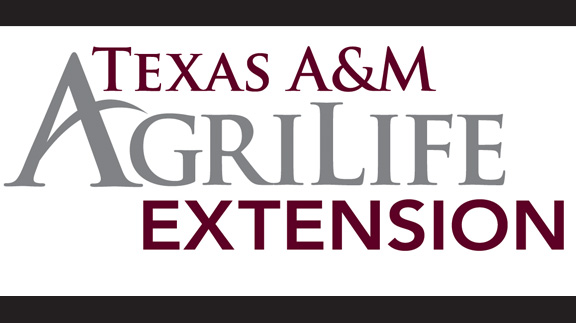Farm & Ranch
[AgriLife Today] Cattle, wheat pricing highlight July 26 conference in Wichita Falls

By: Kay Ledbetter
Writer: Kay Ledbetter, 806-677-5608, [email protected]
Contacts: Stan Bevers, 940-552-9941, [email protected]
Marty New, 580-255-0546, [email protected]
WICHITA FALLS – The Cattle Trails Wheat and Stocker Cattle Conference July 26 will cover how producers can meet pricing challenges in 2016 and prepare for 2017.
The conference, sponsored by the Texas A&M AgriLife Extension Service and the Oklahoma Cooperative Extension Service, will be from 8 a.m. to 3 p.m. at the MPEC Event Center, 1000 Fifth St., Wichita Falls.
Registration is $25 per person and includes educational materials, a noon meal and refreshments.
The information will be directed at producers in Southwestern Oklahoma and the North and Rolling Plains regions of Texas, said Stan Bevers, AgriLife Extension agricultural economist at Vernon.
Bevers said important changes are coming to the way producers manage their cattle due to the Veterinary Feed Directive regulation from the Food and Drug Administration.
“This regulation becomes effective January 2017 and will require the producer to have a valid veterinarian-client-patient relationship,” he said. “If a producer does not have a veterinarian, now is the time to begin finding one. Stocker cattle that will be purchased this fall could be covered under this regulation.”
The afternoon portion of the conference will focus on the specifics of the Veterinary Feed Directive and how a producer’s operation will change due to it.
Producers are encouraged to preregister by contacting their local AgriLife Extension county agent, their Oklahoma Cooperative Extension county educator or Allison Ha at the Texas A&M AgriLife Research and Extension Center near Vernon at 940-552-9941, ext. 225 or [email protected].
Speakers and their topics will include:
– Wheat Variety Update for the Southern Great Plains, Dr. Emi Kimura, AgriLife Extension agronomist, Vernon.
– Wheat and Cattle Market Outlooks: What’s Working and What’s Not, Bevers.
– Balancing the Scales: Efficiency, Profitability, Technology, Consumerism and the
Environment, Dr. Chris Richards, Oklahoma State Extension and research beef cattle nutrition specialist, Stillwater, Oklahoma.
– An Overview of the Veterinary Feed Directive: Facts and Fiction, Dr. Tom Hairgrove, AgriLife Extension program coordinator for livestock and food animal systems, College Station.
– Living with the Veterinary Feed Directive: How Will My Cattle Operation Change?, Dr. Ron Gill, AgriLife Extension livestock specialist, College Station.
Industry sponsors will have products on display during the event.
For more information, go to http://agrisk.tamu.edu.
-30-
Find more stories, photos, videos and audio at http://today.agrilife.org
Farm & Ranch
Managing Show Cattle Through The Winter

By Heather Welper
Husband and wife duo, Heather and Calvin Welper, are the Co-Owners and Operators or Two C Livestock, located in Valley View, Texas.
The pair’s operation has a show cattle focus where they raise and sell purebred heifers of all breeds and club calf Hereford steers.
When it comes to show cattle, the Welpers know a thing or two including how to prepare for the cold winter months and the Texas major show season run.
To read more, pick up a copy of the November edition of North Texas Farm & Ranch magazine, available digitally and in print. To subscribe by mail, call 940-872-5922.

Farm & Ranch
Double M Ranch & Rescue

By Hannah Claxton, Editor
As the sun rises each day, so do the dozens of mouths that Meghan McGovern is responsible for getting fed. Rather than the sounds of a rooster crowing, McGovern hears the bellows and bleats of a variety of exotic deer, the chortle of kangaroos, the grunts of water buffaloes, and the chirps of a lemur.
Nestled against the banks of the Red River, the Double M Ranch and Rescue, with its high game fences and deer sprinkling the landscape,s its in stark contrast to the surrounding ranches.
“Having deer is kind of like eating potato chips- you can never actually have just one,” said McGovern with a laugh.
McGovern has several herds to take care of- fallow deer, axis deer, water buffalo, goats, and bison. In smaller numbers, there’s also a few kangaroos, a lemur, a potbelly pig, a pair of zebras, a watusi, and a few horses.
To read more, pick up a copy of the November edition of North Texas Farm & Ranch magazine, available digitally and in print. To subscribe by mail, call 940-872-5922.

Farm & Ranch
Acorn Toxicity

By Barry Whitworth, DVM, MPH
With the prolonged drought, most pastures in Oklahoma end up in poor condition. With the lack of available forage, animals may go in search of alternative foods.
If oak trees are in the pastures, acorns may be a favorite meal for some livestock in the fall. This may result in oak poisoning.
Oak leaves, twigs, buds, and acorns may be toxic to some animals when consumed.
To read more, pick up a copy of the November edition of North Texas Farm & Ranch magazine, available digitally and in print. To subscribe by mail, call 940-872-5922.

-

 Country Lifestyles2 years ago
Country Lifestyles2 years agoScott & Stacey Schumacher: A Growth Mindset
-

 Country Lifestyles8 years ago
Country Lifestyles8 years agoStyle Your Profile – What your style cowboy hat says about you and new trends in 2017
-

 HOME8 years ago
HOME8 years agoGrazing North Texas – Wilman Lovegrass
-

 Outdoor10 years ago
Outdoor10 years agoButtercup or Primrose?
-

 Country Lifestyles5 years ago
Country Lifestyles5 years agoAmber Crawford, Breakaway Roper
-

 Country Lifestyles9 years ago
Country Lifestyles9 years agoJune 2016 Profile – The man behind the mic: Bob Tallman
-

 Equine1 year ago
Equine1 year agoThe Will to Win
-

 Country Lifestyles8 years ago
Country Lifestyles8 years agoDecember 2016 Profile, Rusty Riddle – The Riddle Way




